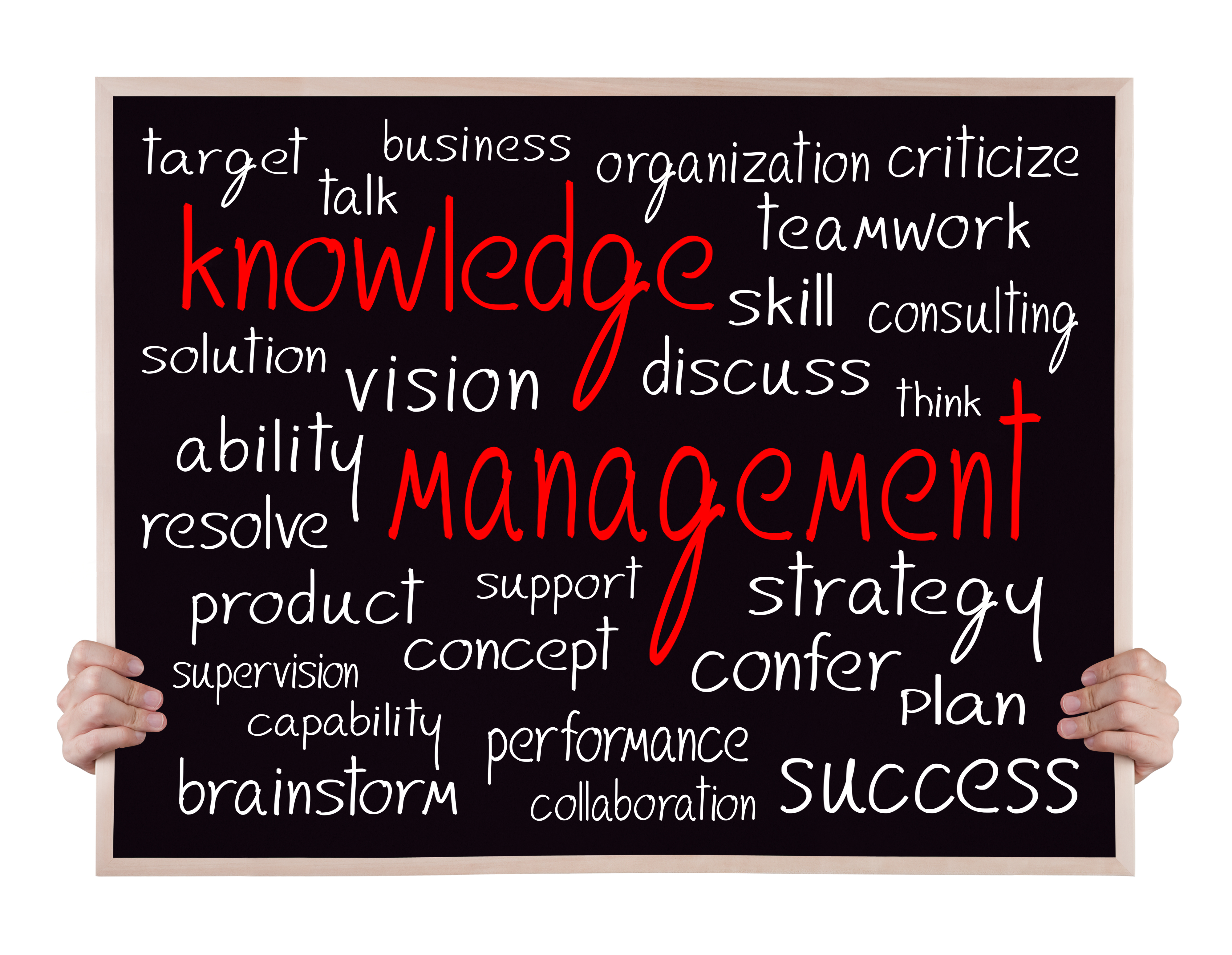Researchers have long known that developing a knowledge management strategy framework can reduce the time employees spend searching for information by as much as 35 percent. But knowledge management goes far beyond saving time. It also helps:
- Create a positive workplace culture.
- Retain top talent.
- Deliver exceptional customer experiences.
And it all begins with creating a knowledge management framework. Let’s explore some framework fundamentals to help you shape a KM framework while maximizing your business’s existing methodologies.
Understanding What a Knowledge Management Framework Does
A critical component of the enterprise knowledge management process, a KM framework is designed to effectively capture, organize, share, and leverage a company’s internal knowledge assets. A type of technology roadmap, it defines how an organization internally identifies, acquires, creates, stores, and distributes knowledge. All knowledge management frameworks include the processes, tools, and technologies that will help an organization facilitate knowledge discovery, collaboration, and dissemination.
Businesses that create robust KM management strategy frameworks gain several advantages over their competitors because:
- They’re able to boost innovation and problem-solving capabilities by leveraging existing knowledge.
- Decision-making is speeded up.
- Task duplication is reduced.
- Overall productivity is improved.
A well-designed KM framework also fosters a learning culture, enhances employee engagement, and promotes knowledge retention.
3 Key Components of a Knowledge Management Framework
Creating a knowledge management framework is an iterative process, meaning it requires ongoing refinement, adaptation, and active participation from stakeholders to ensure its success. It is not a one-time process and doesn’t necessarily follow a linear path. Instead, it allows for continuous improvement and refinement based on real-world implementation, stakeholder feedback, and changing organizational needs.
While a KM framework encompasses multiple components, the top three are:
Knowledge Capture and Creation
Knowledge capture is the extraction and documentation of best practices, useful insights, lessons learned, and creative ideas. It can include resources like surveys, interviews, knowledge audits, brainstorming sessions, and input from subject matter experts. The goal in capturing these diverse datasets is converting individual knowledge into a shared and easily accessible form.
Knowledge creation, on the other hand, is new knowledge generated through research, collaboration, problem-solving, and experimentation. It fosters a workplace culture of continuous learning and innovation that leads to enhanced performance, improved decision-making, and a sustainable competitive advantage.
Knowledge Organization and Storage
If you want your KM framework to be effective, it must be easy for people to access and retrieve the information they need to perform their tasks. The process typically includes information categorization and classification, tagging, and metadata management. Other components include knowledge repositories and databases, version control mechanisms, and search and retrieval capabilities like full-text search and intelligent search algorithms.
Knowledge Sharing and Dissemination
A clear example of knowledge sharing and dissemination is when an organization implements a company-wide knowledge management platform that serves as a centralized hub where people contribute, access, and exchange knowledge or information. Designed to help businesses avoid reinventing the wheel, the process includes everything from communication channels to practice communities, training, and incentives encouraging team members to share their knowledge and learned wisdom.
Examples of Exceptional Knowledge Base Management
Numerous companies in various industries have successfully harnessed the power of knowledge management to streamline internal operations and offer better self-service support to improve customer satisfaction.
Nike
Knowledge bases don’t have to be dry or dull. For instance, Nike’s knowledge base creatively represents the brand by incorporating sports terminology like “Quick Assists” instead of FAQs. Users don’t have to scroll to see the most commonly asked customer questions. And they don’t need to go searching for phone numbers if they need more information—all the contacts are prominently listed at the bottom of the page, including the store locator.
Microsoft
Microsoft’s customer knowledge page reflects a comprehensive knowledge management framework. The search bar has a friendly “How can we help you?” greeting. And clickable icons quickly take users to information on products, devices, productivity tools, and gaming. The “Trending topics” area covers the most commonly searched-for guidance and the section on the brand’s new AI and Microsoft 365 Copilot explains how new AI features will be integrated into the site over the coming months.
NASA
Space exploration is a complex subject, but NASA has implemented a simplified knowledge management framework that captures and leverages knowledge gained from various space exploration missions. The space agency has established knowledge repositories, lesson-learned databases, and best practice sharing platforms, ensuring knowledge is captured and made accessible to researchers, scientists, engineers, and the public.
Siemens
The multinational conglomerate Siemens uses a KM focused on capturing and sharing knowledge to enhance innovation and improve problem-solving. The framework includes tools and platforms for knowledge sharing, collaboration, and expertise location. It allows users to access relevant knowledge resources, collaborate on projects, and connect with experts, all the while fostering a culture of knowledge exchange and continuous learning.
Pottery Barn
The first thing customers see when they navigate to Pottery Barn’s online help center is an easy-to-navigate list of links to popular topics like ordering, shipping and delivering, and online security. The FAQ list further down the page is extensive, but by prioritizing the issues its customers most frequently experience, the brand makes self-service more enjoyable and decreases customer frustration.
Implementing an Effective Knowledge Management Framework
Successful knowledge management implementation calls for careful planning and execution. Some of the most effective ways to implement a KM framework for your organization include:
- Leadership buy-in. Support from top management should focus on prioritizing and promoting KM initiatives, allocating resources, and communicating to employees the value of knowledge sharing.
- Clear objectives. Identify specific areas where knowledge management will have the most impact and align them with organizational goals and strategies.
- Knowledge mapping. Assess existing knowledge assets and identify knowledge gaps so you can create a “knowledge map” that helps you target areas for improvement and enhancement.
- Invest in KM technology. Purchase user-friendly and scalable KM technology tools and platforms that support your knowledge goals and objectives, including data repositories, collaboration software, search engines, and data analytics tools.
- Build a knowledge-sharing culture. Encourage employees to share their knowledge and experiences through incentives, recognition, and rewards and provide platforms where employees can connect, exchange ideas, and learn from each other.
- Training and awareness. Continuous learning initiatives ensure employees understand the importance of knowledge management and provide them with the necessary skills and tools to participate effectively.
- Monitor and evaluate. It’s essential to continually check in on whether your KM framework is producing hoped-for results. Measuring the impact of knowledge management initiatives helps you make adjustments based on your organization’s evolving needs.
- Designate “KM champions.” Choose multiple individuals to act as KM advocates, mentors, and facilitators who encourage others to actively participate in knowledge sharing.
- Integrate existing business processes. Embedding knowledge sharing and collaboration into daily activities ensures KM becomes ingrained in the organizational culture.
- Review and adapt. To be effective, your KM framework should be regularly refined based on feedback, lessons learned, and changing organizational needs.
Don’t Get Left Behind
A rapidly evolving business landscape demands better use of organizational knowledge. Organizations that fail to adopt and implement effective KM practices can find themselves at a significant disadvantage in the form of:
- Missed opportunities. KM makes it easier for businesses to tap into their collective intelligence and leverage intellectual capital. Capturing and sharing knowledge helps your organization identify new opportunities, address challenges, and stay competitive. Without a knowledge management platform, you could miss out on valuable insights, emerging trends, and innovative concepts.
- Inefficient processes. Knowledge management streamlines operations by eliminating redundancies and encouraging collaboration. Organizations that don’t prioritize KM often struggle with inefficient workflows, siloed information, and duplicate efforts which lead to increased costs and delays in decision-making.
- Loss of expertise. Experts say 50% of employees leave in the first two years after being hired. Half of them say they would have stayed if they’d received better onboarding and ongoing training. KM ensures critical knowledge is captured and preserved, even when employees leave for another job, retire, or move to a different role. Without knowledge management, you risk losing institutional knowledge, which can impact future performance.
- Poor customer service. Knowledge management plays a critical role in delivering exceptional customer service. Ineffective KM processes make providing accurate and timely information to customers more difficult, leading to frustration and decreased customer loyalty. Organizations that leverage knowledge management practices, including automated experiences, are better equipped to offer tailored solutions that address specific concerns or questions.
- Diminished drive. Companies that want to foster a culture of innovation rely on knowledge management to facilitate the sharing of ideas, insights, and best practices. Without KM, your organization could be stifling creativity, impeding cross-functional collaboration, and limiting its ability to drive innovation.
To avoid being left behind, organizations must recognize knowledge management’s importance and value as a strategic tool both internally and for improving customer experiences. For instance, one of our clients, the Tel Aviv Sourasky Medical Center, treats patients in 170 outpatient clinics throughout Israel. When the full-service healthcare treatment and research institution wanted to improve its cumbersome and inefficient call center activities, it turned to KMS Lighthouse. By implementing and integrating our AI-driven software into its existing systems, the medical center was able to increase patient satisfaction by 40 percent.
Are you ready to unlock the full potential of your organization’s knowledge? Contact KMS Lighthouse to learn more about creating and implementing a knowledge management framework that will drive innovation, ensure a competitive edge, and revolutionize your operations.







